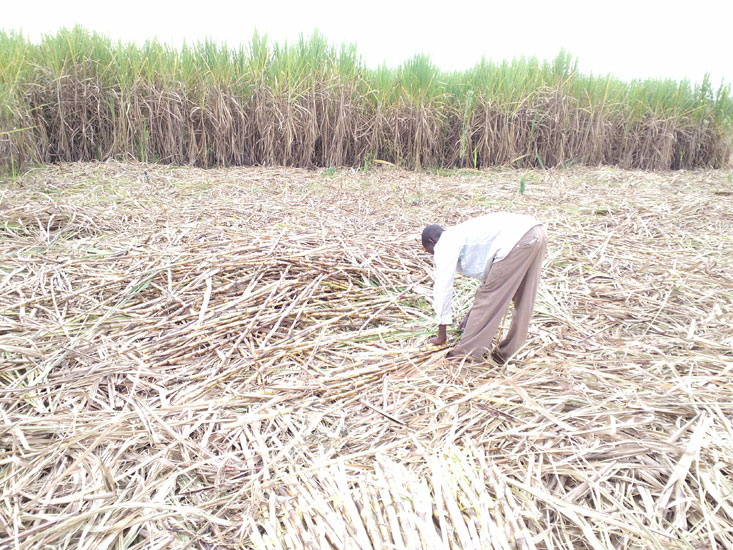Rural areas have moved on. Once places for substance and commercial farming, today, villages or rural areas have slowly metamorphosed into pre-mature urban areas. Many young boys and girls operate a bodaboda or a saloon or a chapati kiosk or just meet up to play cards at the trading centre. Going to the farm or school is no longer their thing, thanks to the Coronavirus induced lockdown.
In the past, we looked to visit the village for fresh foods and free fruits. Not anymore. Now you have to travel to the village with fresh fruits. Being the centre of commerce, Kampala is the net recipient of all produce in the country. Some villages and districts not affected by Sugarcane factories or oil exploration activities, look at selling their produce in Kampala for better prices. To enjoy fresh mangoes, pumpkins, and matooke, you need to buy a bunch in Kampala and move along with it. I was surprised to find mangoes along Kampala Hoima road having a mark you would normally find on those being sold in a supermarket! Is it me who is just unfortunate!
In Hoima and Kikuube villages specifically, two things have affected the lifestyle and family household income dynamics. Sugarcane growing and oil activities. All these are welcome developments. But it appears the locals have not been adequately prepared or sensitized to sustainably live with these. The future looks tough unless government and civil society and players do more awareness training and strategic interventions.

The establishment of the Sugarcane factory in Kikuube district, Munteme village is a welcome development. Many young village boys and girls can now partake in some economic activities like driving cane trucks, harvesting the cane, preparing the fields, managing logistics, and many more. However, like all projects, the sugarcane factory requires lots of square miles of land to grow the cane. That means the resettlement of people. Unlike most countries, Uganda lacks designated burial grounds for the locals or people in a given area. In the past, Munteme parish maintained burial grounds but these have since been made exclusive for parish employees who have nowhere to be taken for burial.
Today, each family designates and maintains its burial grounds. One of the challenges during resettlement was shifting these burial grounds. And unfortunately, it is not possible to do this for all the affected families. At this rate of change, the government through local administration should consider designating land for communal activities like burial grounds for the whole village. You may say this is a socialist idea, but it is feasible, and it would work. Even more, creating massive awareness about the different types of burying the dead, could help optimize land use for those with an open mind and would not mind cremation, for example.
Sugarcane factories thrive on out-growers – farmers around the factory that grow the cane to ensure steady supplies of raw materials to avoid downtime due to cane stockouts. In the beginning, cane prices from out-growers were at an average of Ugx. 150,000 per ton, and it was on a cash basis. Today, the price has reduced to between Ugx. 80,000 to 100,000 and payment comes after three months following delivery. This is still good, and no one is complaining. The problem is the factory is not guiding people to have the right mix to grow cane with food crops. There is a high risk of hunger outbreak in Hoima due to lack of land.

It is this challenge that has created a new vice – renting fields and empty gardens. If you have land that you are not using, some people will approach you to rent it. Usually, an acre goes for about Ugx. 150,000 per complete season (usually six months). This business is becoming lucrative. People are renting land to graze their cows, to grow food crops, etc.
And that is how this Christmas, one of my friends from Kampala almost cried blood. My friend, who I will call James, went to the village, bought land and about 20 animals (cows). He did this in 2016.
Due to busy schedules, he hired workers to look after his farm. Over the years, he sent money and all support to make sure his farm grew. When he would visit once in a while, he would see cows, and the man tending them would smile and show him the animals. But his cows never produced. Every visit, the cows remained at 20, and he started wondering what could be happening. It was too late to discover that the village man took all the calves and or sold them.
But that was not enough.
Some other farmers would hire his land and cowshed and take advantage of the pumped water and other treatments for his cows, which are expensive. In the end, the return on investment remained poor. For that reason, if you have to implement a serious project in the village, you need to be there frequently, and put in place serious checks and balances.
The villages have moved on. So have the people. Have that in mind.









